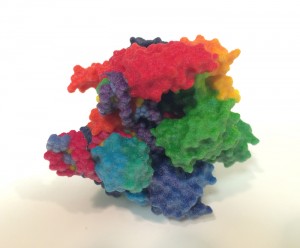
CRISPR-Cas9 is a gene-editing technique that enables scientists to disable, replace or modify sections of DNA. It allows for unprecedented precision and speed in the field of genome editing. It has been used to create micropigs to be sold as pets and to try to eradicate HIV infection in humans.
The scientific community is concerned about altering human embryos to create “designer babies,” but some USC Stem Cell experts say that in the United States, CRISPR-Cas9’s use on plants and animals will make waves first. Should these edited organisms be labeled as genetically modified organisms (GMOs)? Questions about environmental consequences, the ethics of consent and public policy need to be addressed.
Qi-Long Ying — associate professor of stem cell biology and regenerative medicine and director of the Chang Stem Cell Engineering Facility — has been using CRISPR-Cas9 on embryonic stem cells since 2013. Ying has used CRISPR-Cas9 on heritable stem cells in mice and rats. His research goal is to sustain a cell’s ability to regenerate when needed.
“This technology is very powerful and has the potential to cure many genetic diseases,” he said. “I expect that CRIPSR-Cas9-based therapies will be in clinical trials in the next few years. But before all that, we need to do a lot of research, including in early human embryos.”
As scientists perform this research, Ying advises the utmost caution in employing this new gene-editing technique.
“We use the bacterial protein Cas9 to cut DNA; however, this protein may have unwanted functions in human cells,” he said. “In some cases, DNA repair after a CRISPR-Cas9 cut is not perfect. The repaired DNA sequence could create a new protein that is harmful. Additionally, people think the chances of an off-target snip using CRISPR-Cas9 is extremely rare, but the probability of this happening is actually high. Just one off-target cut could cause big trouble.”
USC Stem Cell principal investigator Paula Cannon leads a research team that studies viruses, stem cells and gene therapy. Cannon has been working on the precursor to CRISPR-Cas9, “zinc-finger nuclease editing,” for nine years. She is engaged in a clinical trial that edits DNA in the middle of the CCR5 gene in an effort to produce an HIV-resistant immune system.
“The December 2015 call for a moratorium on the use of CRISPR-Cas9 to make heritable changes to the human genome may not be enforceable or practical,” she said. “The truth is that countries that do not have well-regulated research protocols could allow companies to exploit people’s vanity or desperation and use this technology to engineer human embryos. In such situations, saying ‘let’s not do any germ line engineering’ is too simplistic. We should instead continue to research how this could be done safely and understand more about the process, while recognizing that society currently does not condone the use of this technology.”
